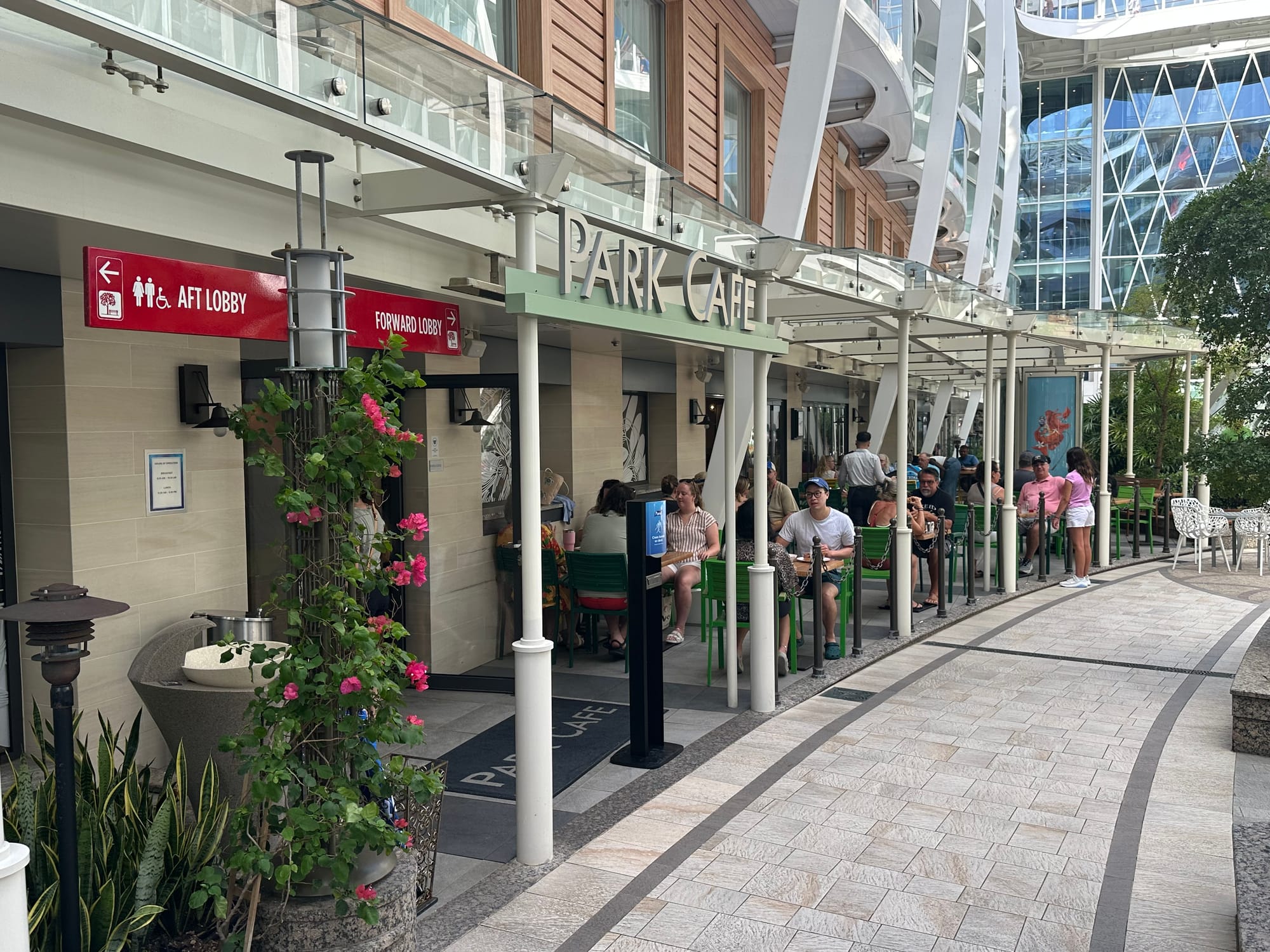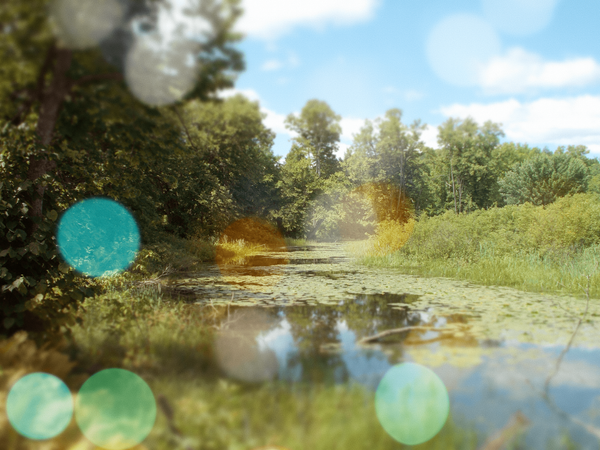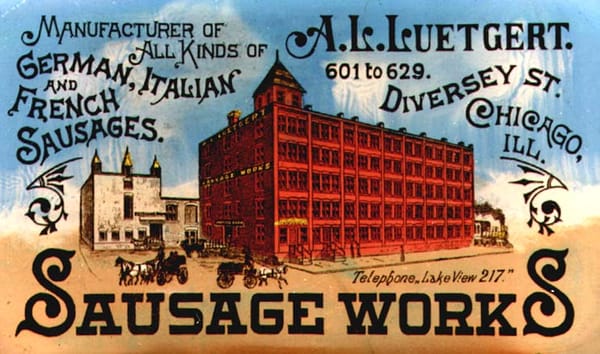An Encounter in Central Park
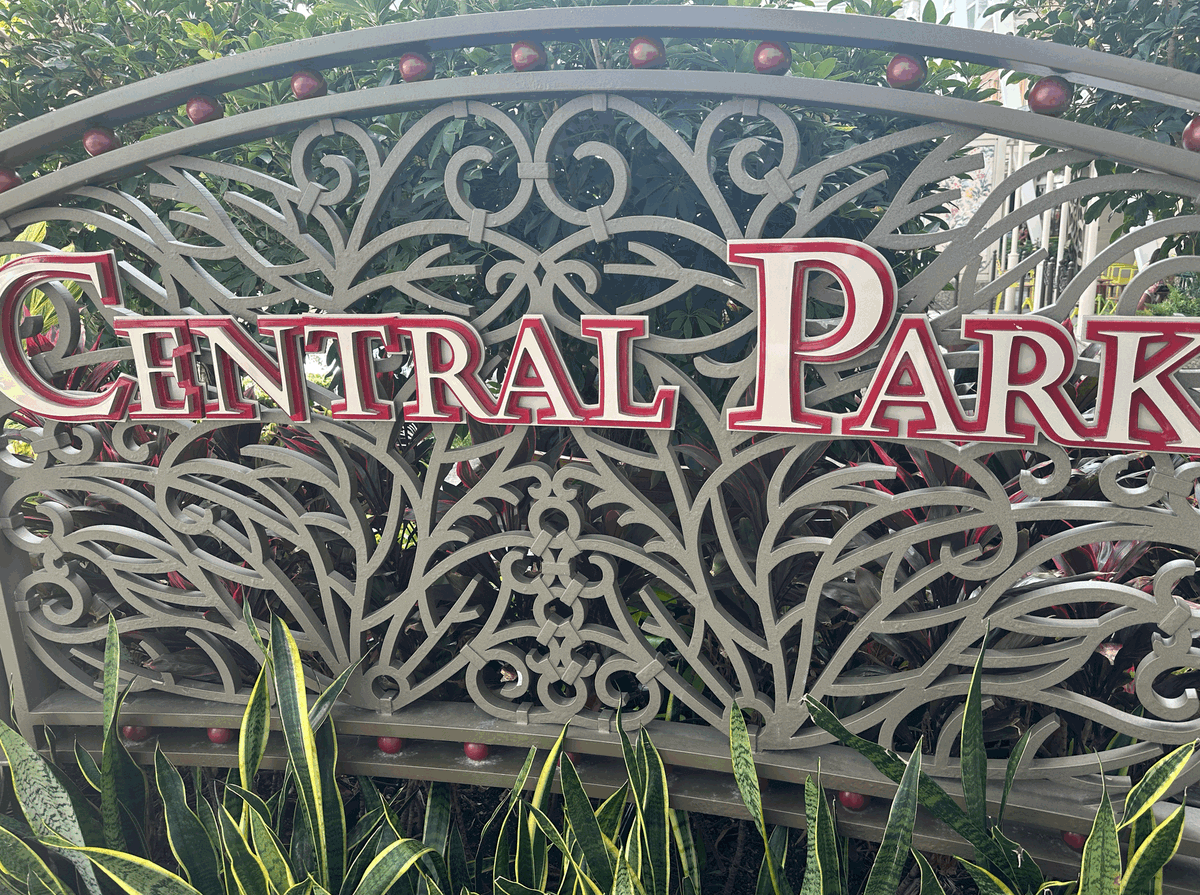
This morning, I went to Central Park. It was fairly early, about 7:30 AM, and only a few people were milling about. I stopped in a cafe and grabbed a coffee and egg sandwich, and found a nice seat by some bushes. There was a bit of a breeze, the sky was blue, and the sound of birdsong filled the air.
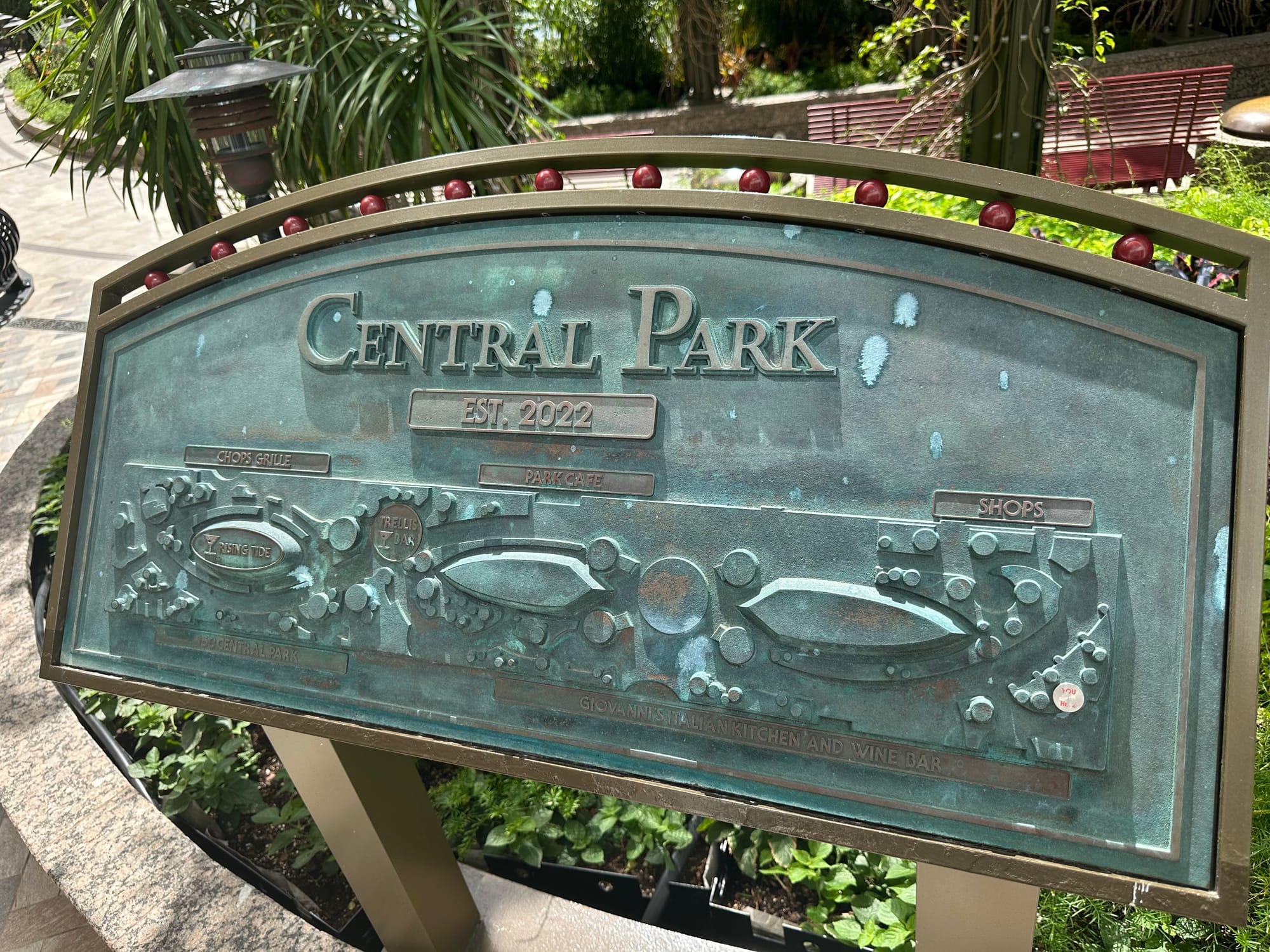
Though New York's Central Park is famous for the ecological disaster that was Eugene Schieffelin's romantic gesture of introducing every bird mentioned in Shakespeare, thus causing the deaths of hundreds of people, the birds I was hearing were not from Shakespeare.
They were from South America. And Asia. And the north woods of Canada.
These birds were chosen for their calls rather than their local viability, and as they were just recordings, it hardly mattered. There are very few actual birds here.
Merlin can't identify it. It's probably copyrighted.
You see, I'm aboard Royal Caribbean's Wonder of the Seas, the third largest cruise ship in the world. It's an Oasis class vessel, meaning its cavernous interior is divided into neighborhoods, one of which is Central Park.
This central park is roughly the size of a football field, and is filled with plants, sculptures, and even a jewelry store, Effy, which is pronounced "Eff You" by those in the know.
But there are birds here.
As I was sipping my coffee, I noticed something dart into the bushes. It was quick, small, and evasive. I sat still and watched some more, bathed in the incongruous sounds of whippoorwills and cockatoos. Flit. Hop. Flit. Dive. An olive green bird with a yellow underside carefully scouted the area and disappeared into the undergrowth.
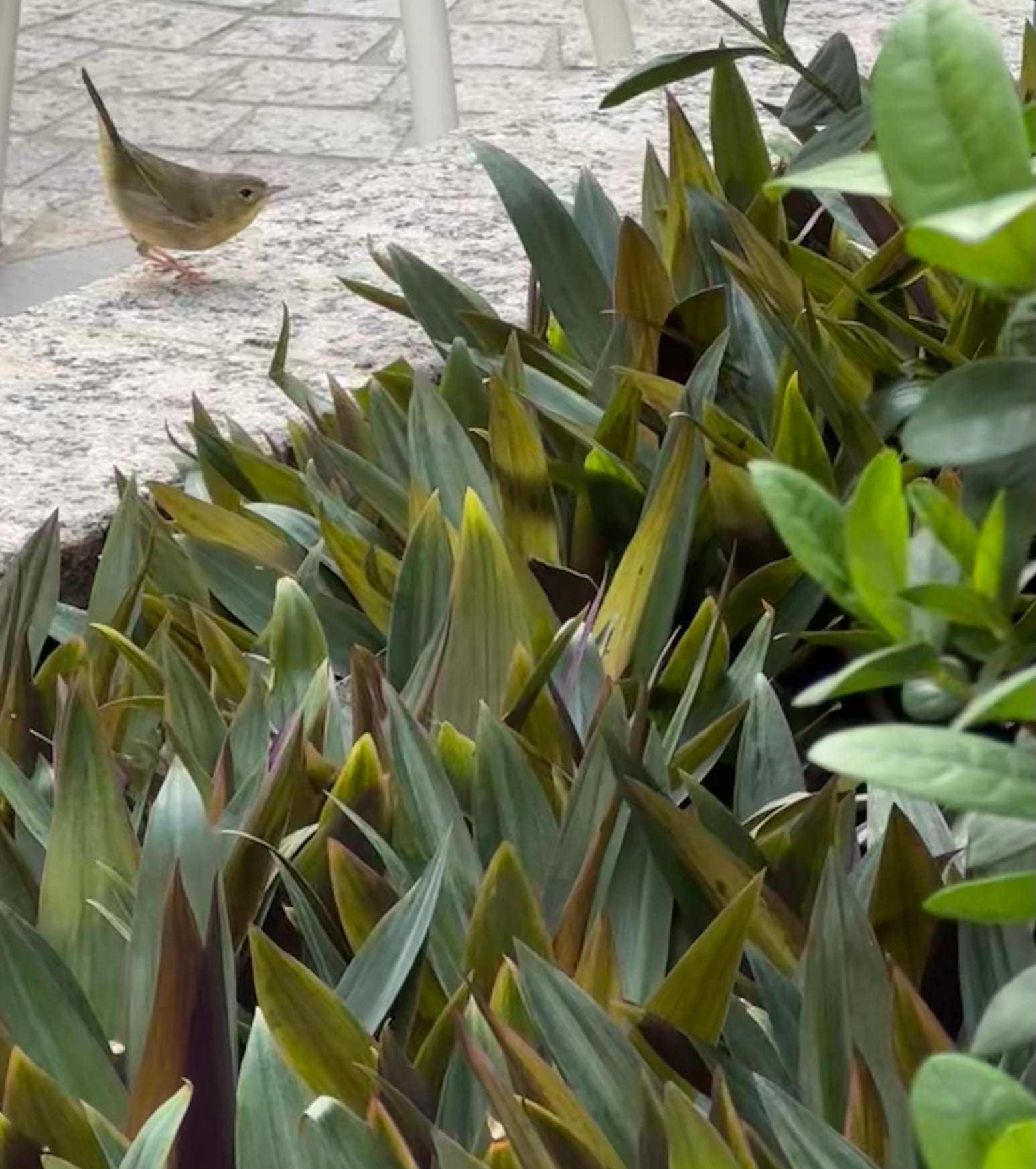
I was waiting for a tour with one of three horticulturalists on board. I was definitely going to ask about the bird. It's colors made it seem very Caribbean, yet I know from using the Merlin app that they're common in Illinois, at least during the warmer months. I suspect it would rather be there than trapped in a steel and glass canyon with no mates and way too many people.
These birds feed mostly on insects, and while I did spot some ants and a fruit fly, I don't think there's enough insect population here to sustain too many birds. I read that they'll also eat seeds, and those are available in abundance—not from the plants, but from the droppings of tourists leaving the cafe.
I considered grabbing a seedy roll, denuding it of its pepitas and giving the bird a snack in the undergrowth. But this seemed like a classic example of paving a road to Hell.
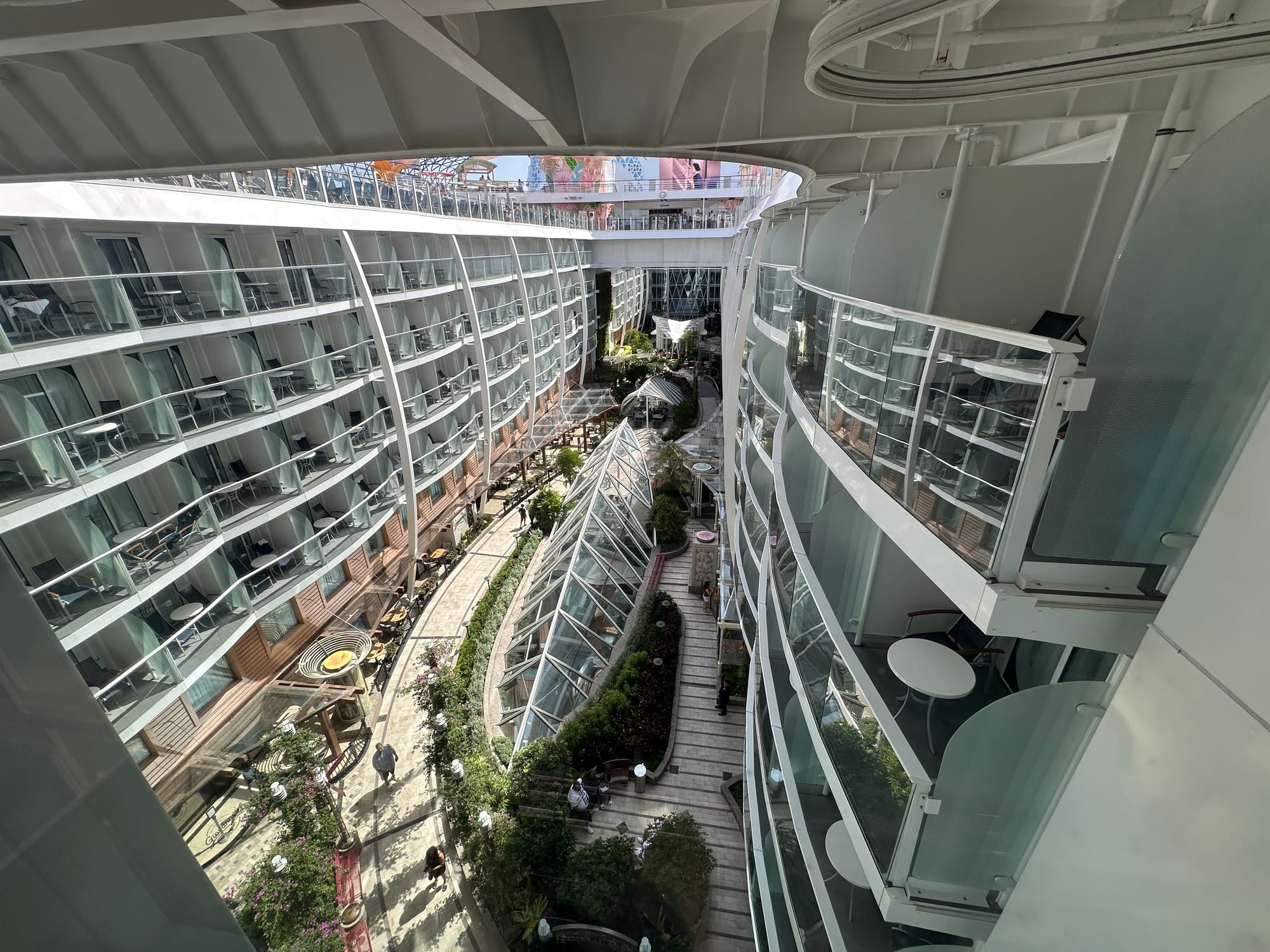
There are currently seven ships with this open air space. Surrounding it are cabins with balconies that overlook the park, but not the sea. This creates the surreal environment of having a Central Park property... that moves. Trees and flowers out one door, the Mayan Coast out the other. With water slides and surfing 10 decks above.
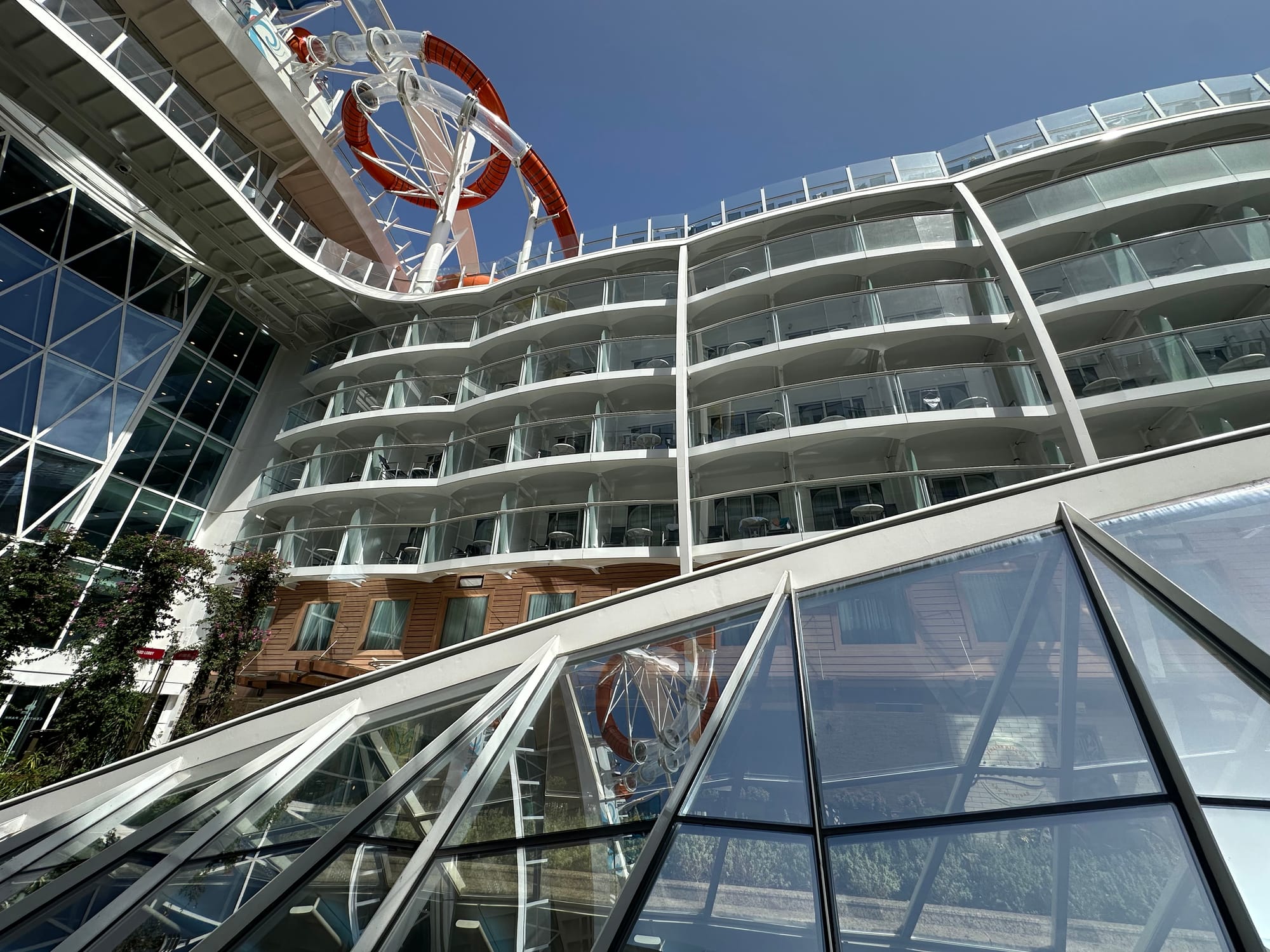
There many things to be commented on regarding the state of cruising, but I want to focus on a couple of encounters I had this morning.
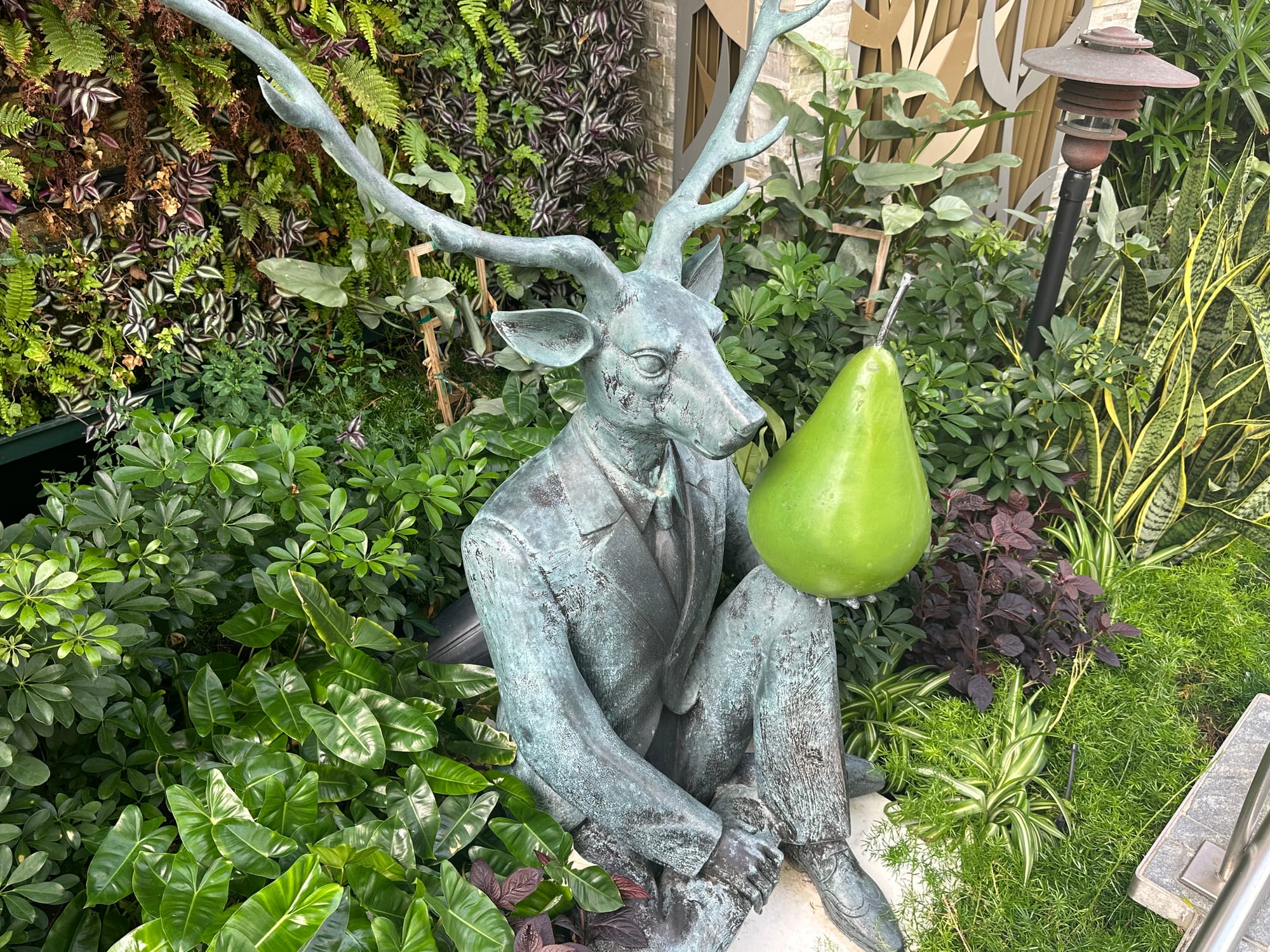
Our Panamanian horticulturalist was soft-spoken, which wasn't ideal in this quiet-yet-noisy environment. I did my best to listen, but it was difficult. He explained that this ship was meant for the Asian market, and showed a picture of a lovely Japanese garden. Imagine one, and you know what I was seeing. He then explained that it cost $400,000 in plants alone, and soon after it was installed, it was incinerated. Not by Oppenheimer, but by marketing.
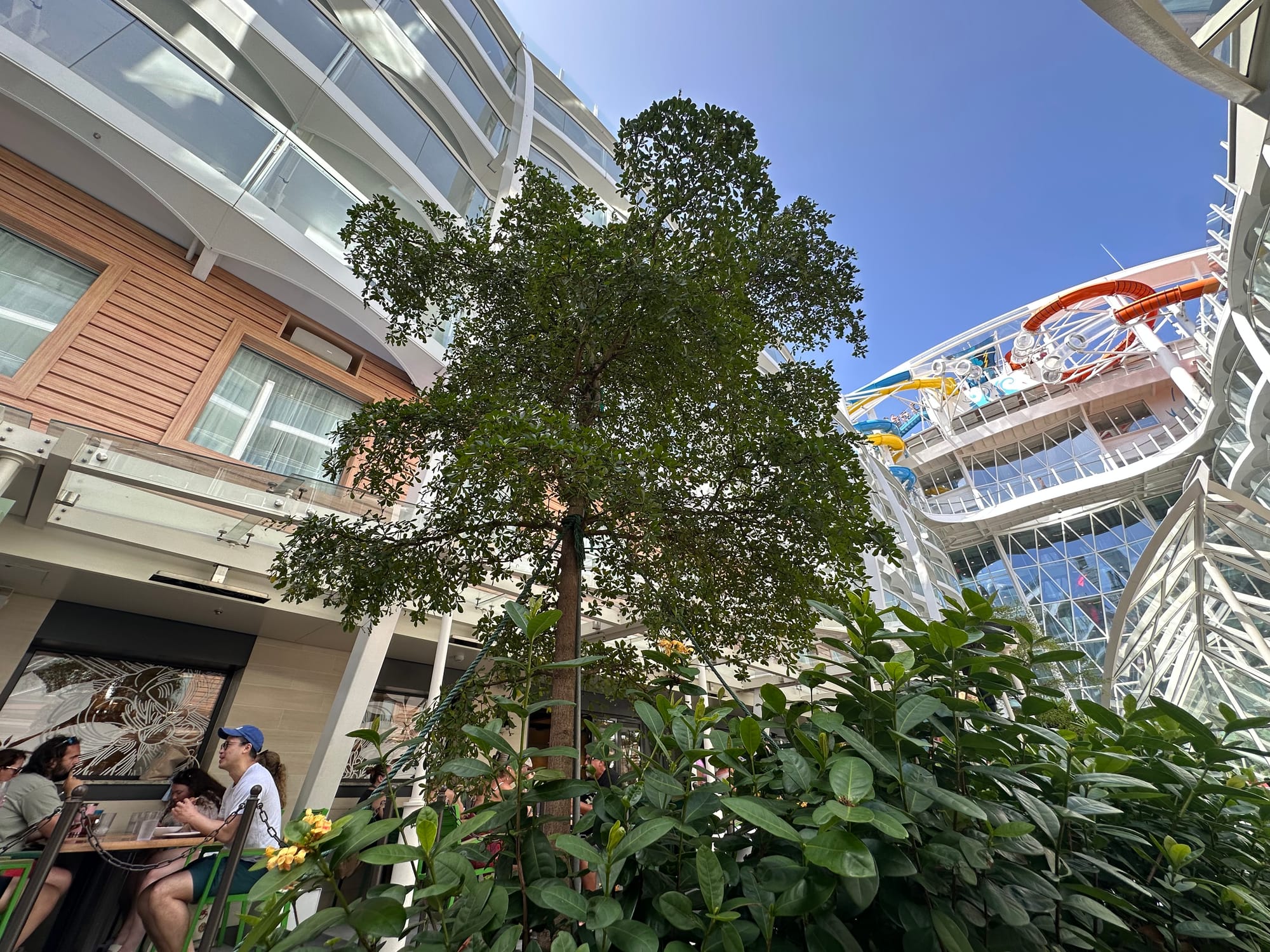
The ship had been re-assigned from Asia to the Caribbean, and Royal Caribbean wanted an experience that would be more welcoming to the mostly American passengers. Replacing the mungo pines and orchids were rows of dracaena and pachysandra, plants that are common in US-households but less so in NYC's Central Park. Black olive trees gave the display height, and while one would never mistake the place for any portion of the real Central Park (despite the analogue of Strawberry Fields), at a glance, it seemed—American. The way a mall with fake street lights does.
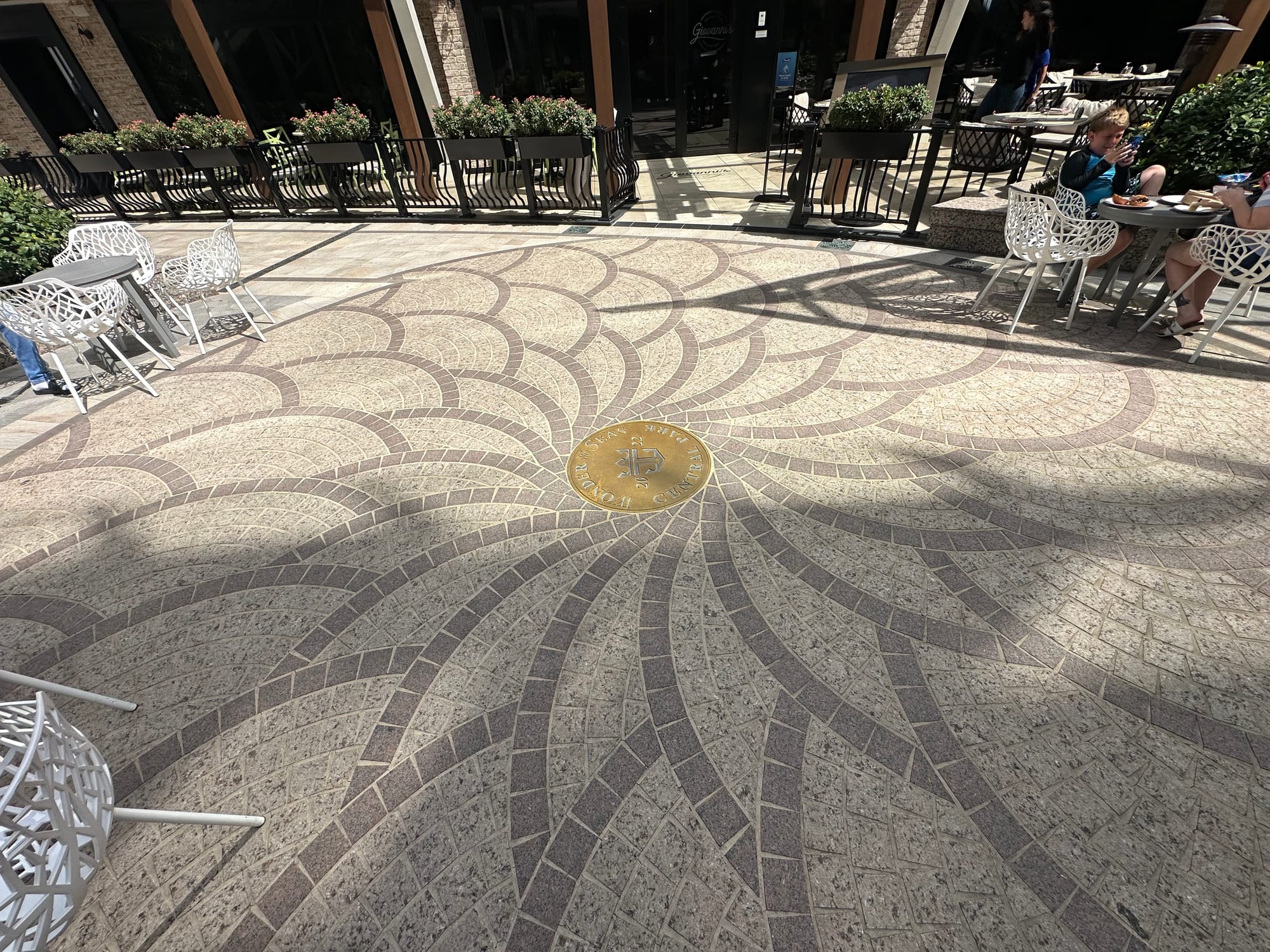
This man loved plants. Imagine Lowell from Silent Running, and a similar beef with a management that insisted that he use "chemicals" to fertilize his plants. He obeyed, but lamented the terrible water that "comes from the sea." He shared his theories on "natural" fertilizers and pesticides, delving into medical uses for plants on several occasions. One guest stated "You're a doctor as well as a plant guy!" and the crowed smiled approvingly.
I ignored this argument-from-authority pseudoscience and listened for the bits that interested me. All the plants that come on board have to stay on board. They can only leave the ship through incineration. The USDA, who has jurisdiction of the park for some reason, demands as much. Any new plants that come in, come in by crane, never through the ship itself. And a lot of new plants come in.
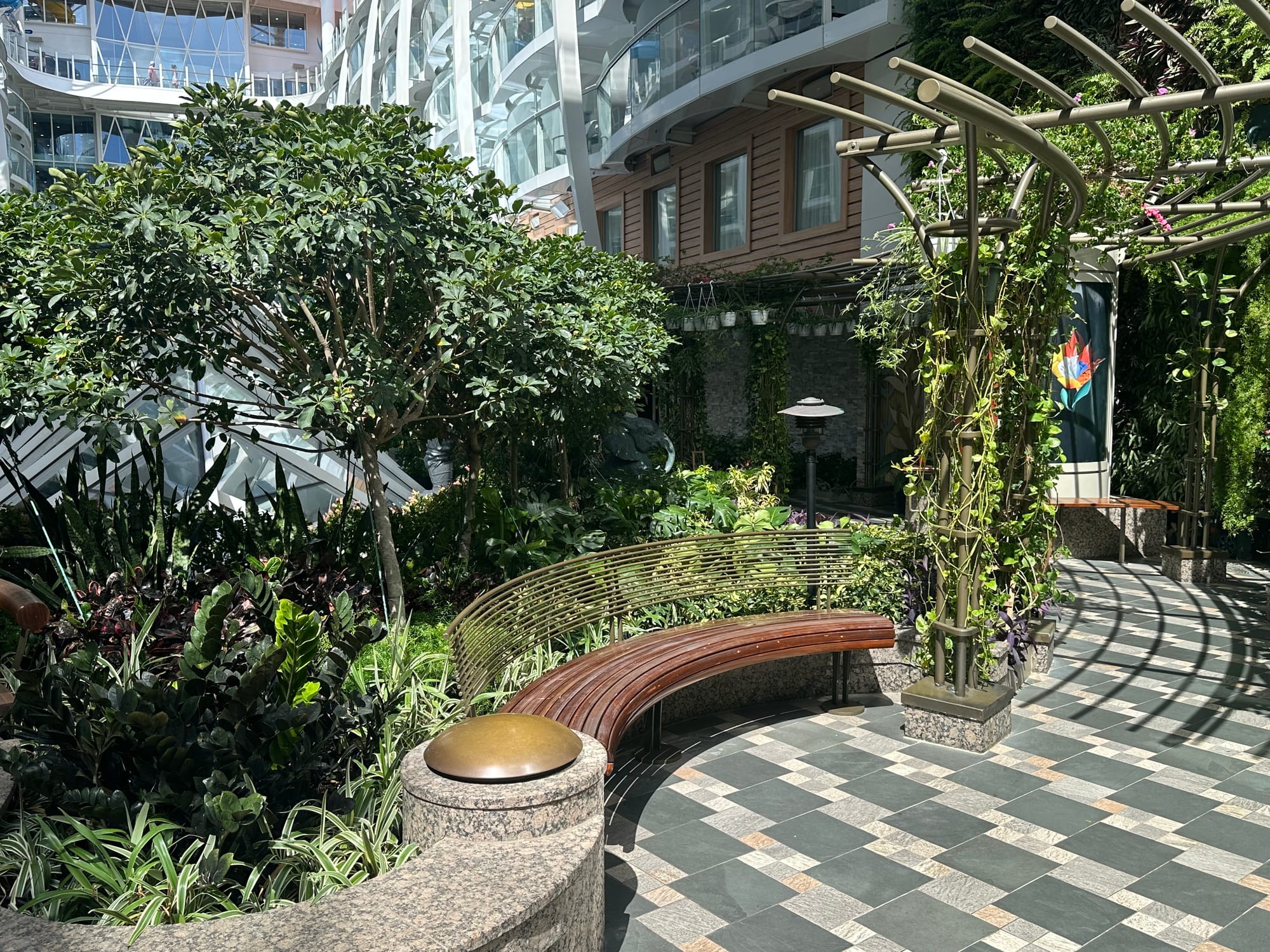
This greenery is well cared for, but there isn't a plant on the planet that's evolved to live in a world where the rain, temperature, humidity and sunlight vary drastically from day to day. Just like the real Central Park, with its engineered rivers, foreign bird species and melting pot of human habitation, this environment is completely manmade.
People asked if there were any real birds in here, and he said "Oh yes. You may have seen a little bird flying around. That is Panchito. He's been here a few years. He used to eat insects but now he eats hamburgers and hotdogs." Chuckles from the crowd. This was the very bird I'd seen earlier. But not the "very" bird, as it turns out.
There was another horticulturalist trailing the group, from the Philippines. He was out of earshot of the lead, so he wasn't aware that the story of Panchito had just been told. I asked about the birds and he told me "We try to rescue them, especially the big ones. We release them on deck. But the little ones just die after a few days. We can't catch them."
"Panchito" is probably a succession of dozens of birds who find themselves experiencing their own personal Twilight Zone.
Our host passed around photos of the birds they'd found here. Pigeons. Pelicans. A Peregrine Falcon who was look for a "Panchito" lunch. He suggested that the sounds of the birds playing over speakers may encourage the larger birds to fly in, but they have a hard time finding their way out as they never have to fly straight up in nature. We learned that Oasis of the Seas has a sizable population of geckos, though there is only one known to reside on our ship.
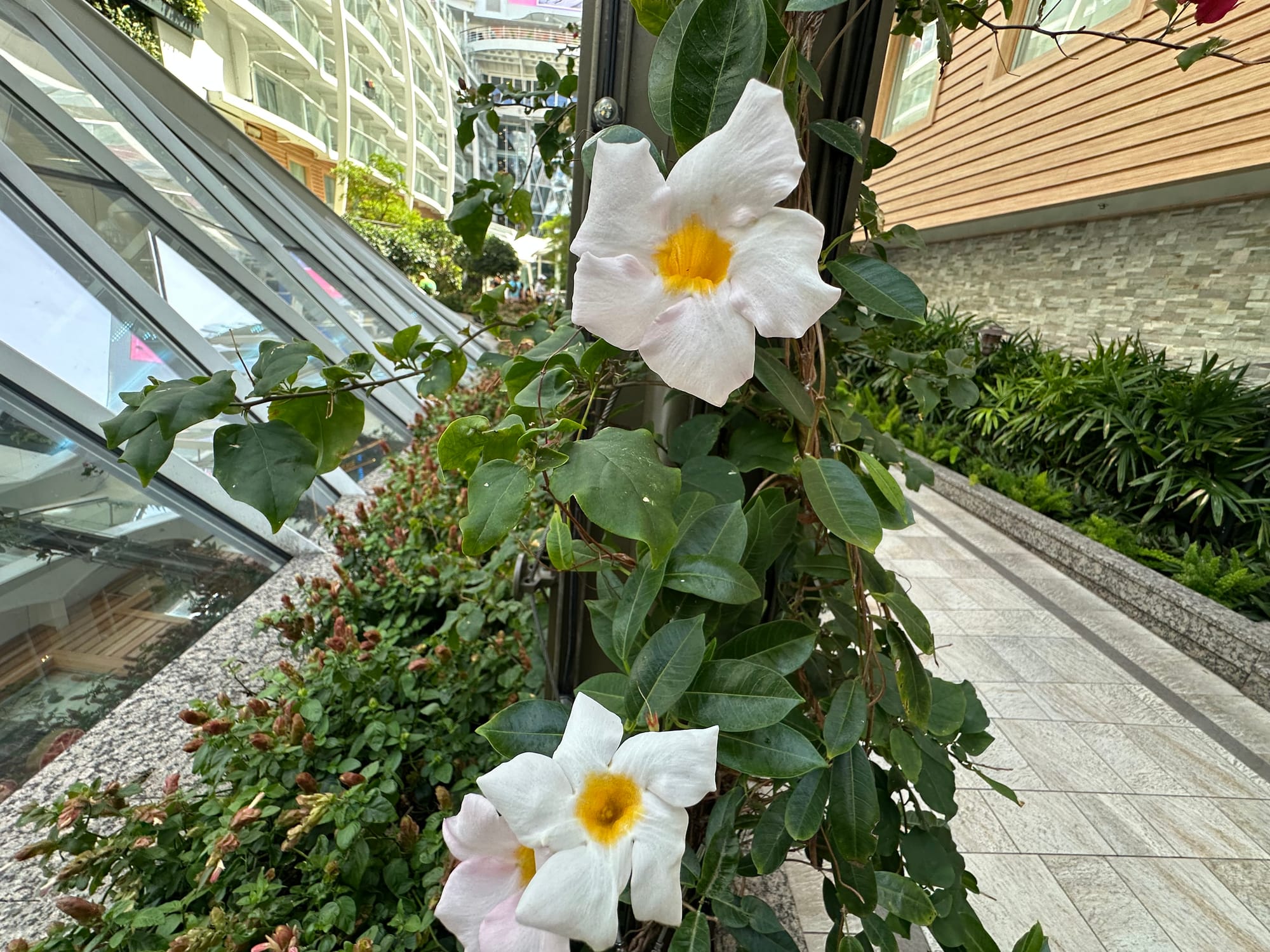
The guests like the wildlife, but tend to kill a lot of plants, and it was obvious that this pained our host. He described guests pouring late-night drinks into the foliage, where wine alters the pH of the soil and piña coladas cover the leaves in sugar, encouraging the inevitable ants to gather. Each morning, he and his crew try to repair the damage by rotating plants (all of which are in hidden pots) and cleaning leaves.
"We find a lot of used condoms in here," he says, suggesting that individuals end their coital engagements by tossing the evidence off the balcony into the greenery below.
They go into the incinerator too.
"And children love to run through the ground cover, which gives a pain in my heart." The hurt was visible on his face. This garden is his family.
And he wanted vengeance. And admitted to getting it a very specific way.
Giovanni's is a specialty restaurant that serves Italian cuisine. To dine there, you need to pay about $65 per meal on top of the cost of your cruise. This is the new standard model of cruising: get them on board, and then make them pay for as much as possible. The average cruiser now spends as much on the ship as they do to get on the ship.
Outside this restaurant is a seating area in the park, imitating an experience you can have in the real Central Park. There is a railing separating those dining from those who joined the scrum for dinner in the buffet. On that railing, are flower boxes. By design, the flower boxes are meant to be filled with rosemary, providing a scented ambiance to complement the cuisine on the plates just below.
But the problem with fragrant herbs is that people want to touch them. And pick them. Sniff them. And perhaps crush them into their food. And these plants were suffering. Each week, new plants were planted only to look like locusts had swept through by day 5. And our host had had enough.
He ordered new plants, and for many weeks they remained unmolested. Because they weren't fragrant rosemary: they were spiny euphorbia—a toxic, unforgiving succulent with delicate flowers and vicious thorns.
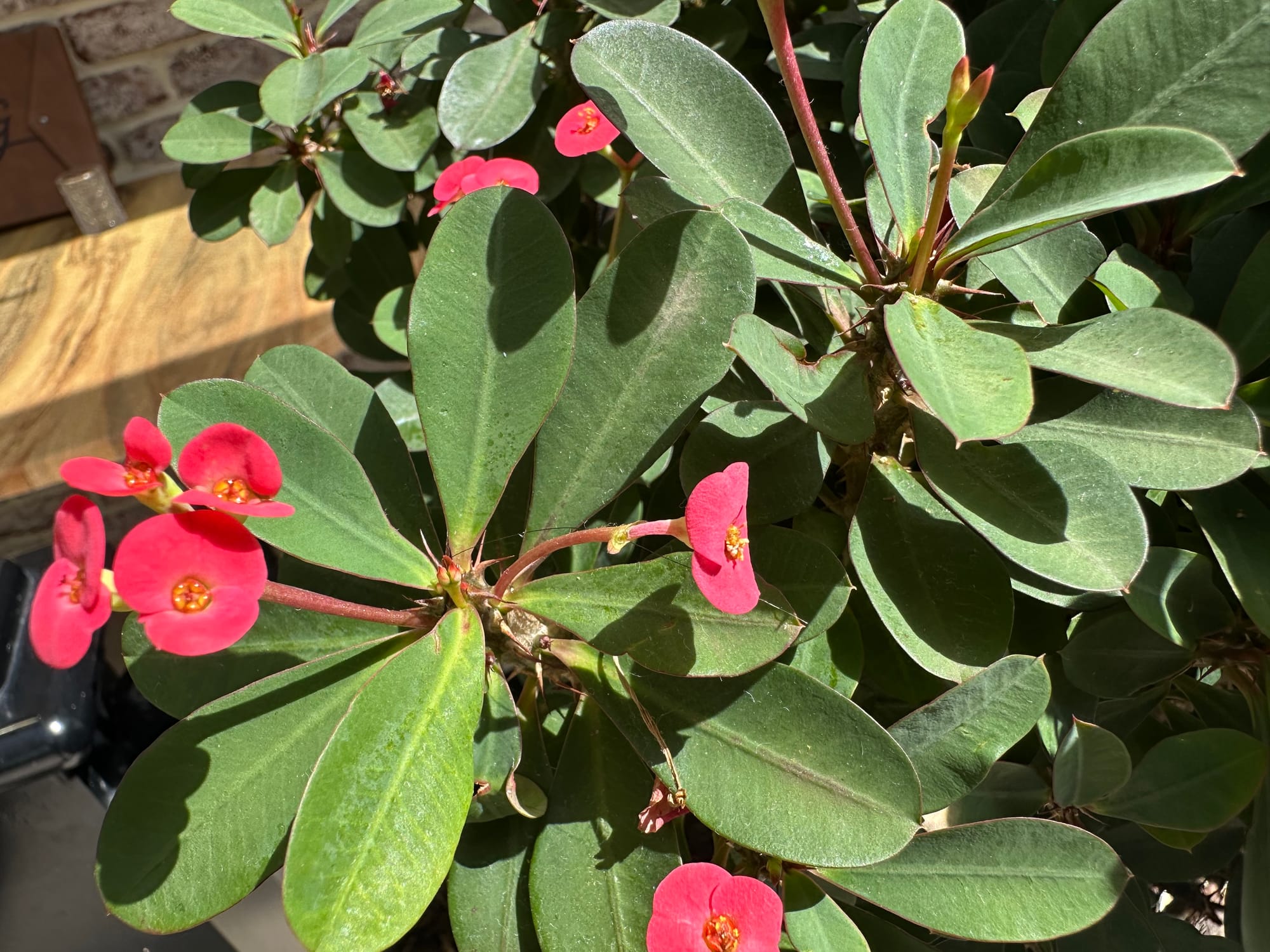
"No one hurts my plants now," he said. When someone suggested that there should be a warning as children might run their hands through the foliage and injure themselves, he did not answer and turned to another subject. I thought I caught a bit of a micro-smile that said "serves them right."
That other subject was that Royal Caribbean had told him to remove the euphorbia and replace them with the rosemary, which will happen at the end of this cruise. He also mentioned that he'd be rescuing his little blood-sated Audrey 2's to another part of his garden.
I asked what would happen if the ship were re-deployed to Alaska, and he said "This would be all pines." And another several thousand dollars of plants into the incinerator. In fact, no ship with a Central Park has ever been to Alaska.
But this wasn't the encounter that prompted this flurry of typing.
We had a time zone change today, and the clocks jumped forward to EDT. As this plant talk was one of the earliest planned events, it makes sense that someone would miss it, especially given that phones don't automatically change on cruise ships.
"I'm late, aren't I." A woman about 15 years younger than me asked. "Yes, it's just wrapping up now, I'm afraid. It was interesting though." She was wearing a tan t-shirt, with a plainly written D T M F on the front.
I'm very familiar with DTMF, and you likely are too. If you've been involved with telecommunications, it's right up there with POTS, ISDN, and T1 as common initialisms. So I asked her if she worked in telecom.
Her puzzled look answered the question before her lips could. "No, but I'm not sure what you mean?"
"Oh, I just noticed the DTMF on your shirt, you know, Dual Tone Modulated Frequency?" It's the term for the tones a touch-tone phone makes when you press the buttons. They were designed so that machines could hear the sounds and react, probably in the early 1960's. It's what makes push button phones possible as opposed to rotary phones which emitted pulses that were merely counted. Effective, but slow. DTMF was a major innovation, and it's still used extensively today, even on your cell phone.
"Umm, this is a Bad Bunny shirt. It's one of his albums."
She went on to explain that DTMF stands for Debí Tirar Más Fotos, an appropriate sentiment for a cruise, if debatable.
I wonder if he worked in the telecom industry
"Oh, thank you for explaining," I said and she wandered closer to our plant host either to hear the very end of his Q&A or to get away from the strange guy with the Gulf of Mexico shirt.
That encounter summed up the entire experience for me. This new cruising isn't for... me. It's for folks like her, who have a fresher and different take on existence and entertainment. Jen and I have enjoyed our trip, but there's one thing we haven't been able to do onboard, and given that we're on a ship at sea, it's a remarkable omission: there's nowhere to sit comfortably with a view of the ocean. There is the pool deck, with all its chairs facing away from the ocean as well as water park, music blaring, alcohol flowing. There is the buffet, with decreasing hours, noise, and crowds. And there is your personal balcony, which can be quite hot depending on what side it's on. And that's it.
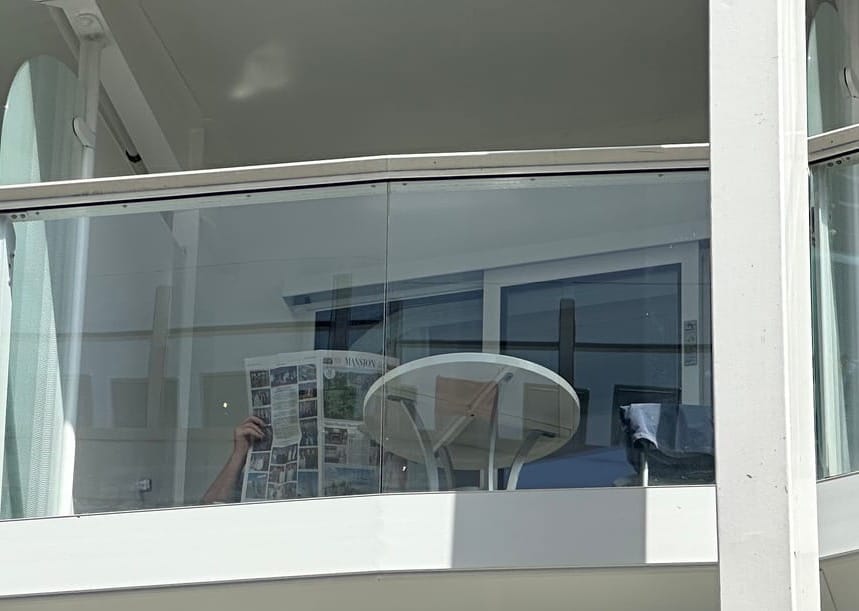
This vessel is a ship only because it has to be. It doesn't want to be a ship. It doesn't celebrate sailing. The public rooms, even the Schooner Bar with its nautical theme, don't have windows or port holes. The lounge I'm in now, reserved for people who've spent the equivalent of several months sailing with this cruise line, has TV screens showing the sea passing by, but no actual windows.
It's a resort that moves. And though it's not what I'm looking for, it's popular, and well done. Conversations overheard are about which other floating resorts people have been on, and there's very little talk about the places people have visited. In the advice of "Be a traveller, not a tourist," this crowd is unashamedly on the side of the tourist.
Royal Caribbean has now started buying the actual places, as well. On this trip, we went to Coco Cay, owned by RCL, Costa Maya, recently purchased by RCL, Roatan, an authentic destination, though heavily touristified in the port area, and finally Cozumel, of which RCL has purchased a large portion.
It will be entirely possible to set foot on this ship, and have the same "Royal" experience on land as well as onboard. Same themes, same drink package, same suggestion of travel without actually experiencing new places and people, despite moving from one island to another.
This is what people want, especially those under 40, who make up the bulk of the passenger population. Perhaps growing up with the Internet has changed the perception of travel. Perhaps having your own personally curated comfort bubble has become a necessity rather than something to shed once in awhile to broaden one's horizons. I didn't grow up in this world, so it seems foreign to me. And in a way, that alone makes me a traveller.
I'm experiencing another culture.
I still long to travel, and I have renewed interest in the fleeting concept of authenticity. I'll never find it, but there are different ways to spend one's leisure time, and I'll be looking forward to sails rather than azipods in the coming year.
Meanwhile, they make a nice roast beef here.
